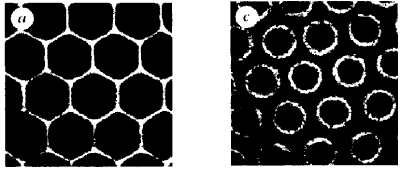 |
Science Frontiers ONLINE No. 108: Nov-Dec 1996 |
|
|
Earthquakes And Mima Mounds
In a recent paper in Nature, P.B. Umbanhower et al described how they created regular geometric patterns in a layer of fine particles (only 0.15 mm in diameter) spread on a vibrating surface. At various forcing frequencies, they saw the layer of tiny brass spheres heap up into hexagonal honeycombs, circular piles, and even stranger shapes.
(Umbanhower, Paul B., et al; "Localized Excitations in a Vertically Vibrated Granular Layer," Nature, 382: 793, 1996)
Comment. Nothing anomalous here, you say? Quite right, but perhaps there is in this experiment an explanation of a long-recognized geological anomaly: The origin of the famed Mima Mounds found scattered by the thousands in various regions of the planet, such as Mima Prairie near Puget Sound, in Washington State.
Actually, the demonstration of Umbanhower et al was preceded by a similar experiment back in 1990. In that year, A.W. Berg reported in Geology how he had covered a piece of plywood with a thin layer of fine sand (loess) and subjected the plywood sheet to impacts simulating earthquakes. Lo and behold, the sand rose up in an array of Mima Mound-like heaps. (See: SF#69 and p. 201 in the book Science Frontiers. This book is described here.
Umbanhower, a physicist, probably doesn't read Geology, but the results of his team's experiments certainly confirm Berg's simpler experiments and support the idea that quakes molded the Mima Mounds.
 | Patterns of tiny brass spheres created by different forcing frequencies. Were Mima Mounds piled up by quakes. |